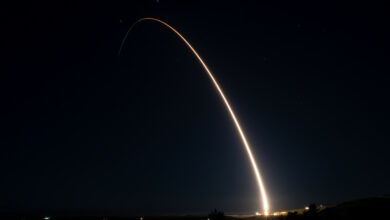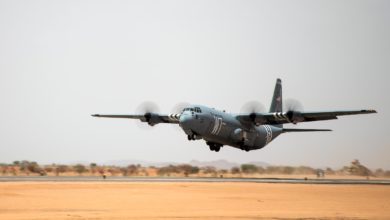Quarter of British Soldiers Could Be Robots By 2030s, Top General Says
The comment comes a week after the head of the British Army said he wanted teams of humans and machines to be commonplace by 2025.
Chief of Defence Staff Gen. Sir Nick Carter claimed a quarter of British soldiers could be robots by the 2030s in a television interview with Sky News on Sunday.
“I suspect we could have an army of 120,000, of which 30,000 might be robots,” he said.
His comment comes a week after the head of the British Army, General Sir Mark Carleton-Smith, said he wanted teams of humans and machines to be commonplace by 2025.
Carleton-Smith made the remarks while explaining the concept of “mothership” in future battles wherein armored fighting vehicles will command a team of robots who will assist soldiers, thus adding another layer of offense and protection to the battlefield.
These comments come as the UK government is working on an integrated defense review to lay out a plan of action for the next five years.
Plans Frozen Due to Pandemic
Investment in robot warfare was to be at the heart of the defense review, according to the Guardian. However, the plan is currently at an impasse after Chancellor of the Exchequer Rishi Sunak scrapped a cross-government spending review to which the defense review had been linked.
The government is instead planning a one-year budget considering the financial uncertainty caused by the pandemic.
However, Carter sounded optimistic about the situation, saying that negotiations are ongoing with 10 Downing Street and the Treasury to salvage the defense review.
“Clearly, from our perspective, we are going to argue for something like that [a multi-year budget] because we need long-term investment because long-term investment gives us the opportunity to have confidence in modernization,” he said, the Guardian reported.
More ‘Dispensable’ Soldiers
Speaking in a separate interview with the Truth Trade Podcast some eight months ago, Carter stated that the review will have a “profound impact” on the modernization of the armed forces, with more automation across all armed services.
“To put it tritely, you’ll see more robots in all of the domains; land, air, maritime, but also in space. You will want things more maneuverable, probably smaller and faster, and probably, often, dispensable,” he said.
Last month, Defence Secretary Ben Wallace made similar remarks while unveiling the Ministry of Defence’s Science and Technology strategy.
“We are in a very real race with our adversaries for technological advantage,” Wallace said, calling to bridge the divide between “advanced science and technology research, production, scaling, and commercialization.”
The UK army reported 78,620 full-time staff in January, below the nominal target of 82,050 staff and 29,860 reserves.
Carter predicted that the size of the army could reach 120,000 in a decade with the addition of robots and tech-savvy civilians, employed primarily to counter cyber threats.
Describing the size of the army in 10 years, he explained, “It’s got 30,000 robots, 30,000/40,000 reservists, 40,000 what we might call regulars at the moment. It’s got, 20,000 civilians. It will be a mix of skills and technologies that give a collective output different to today.”












